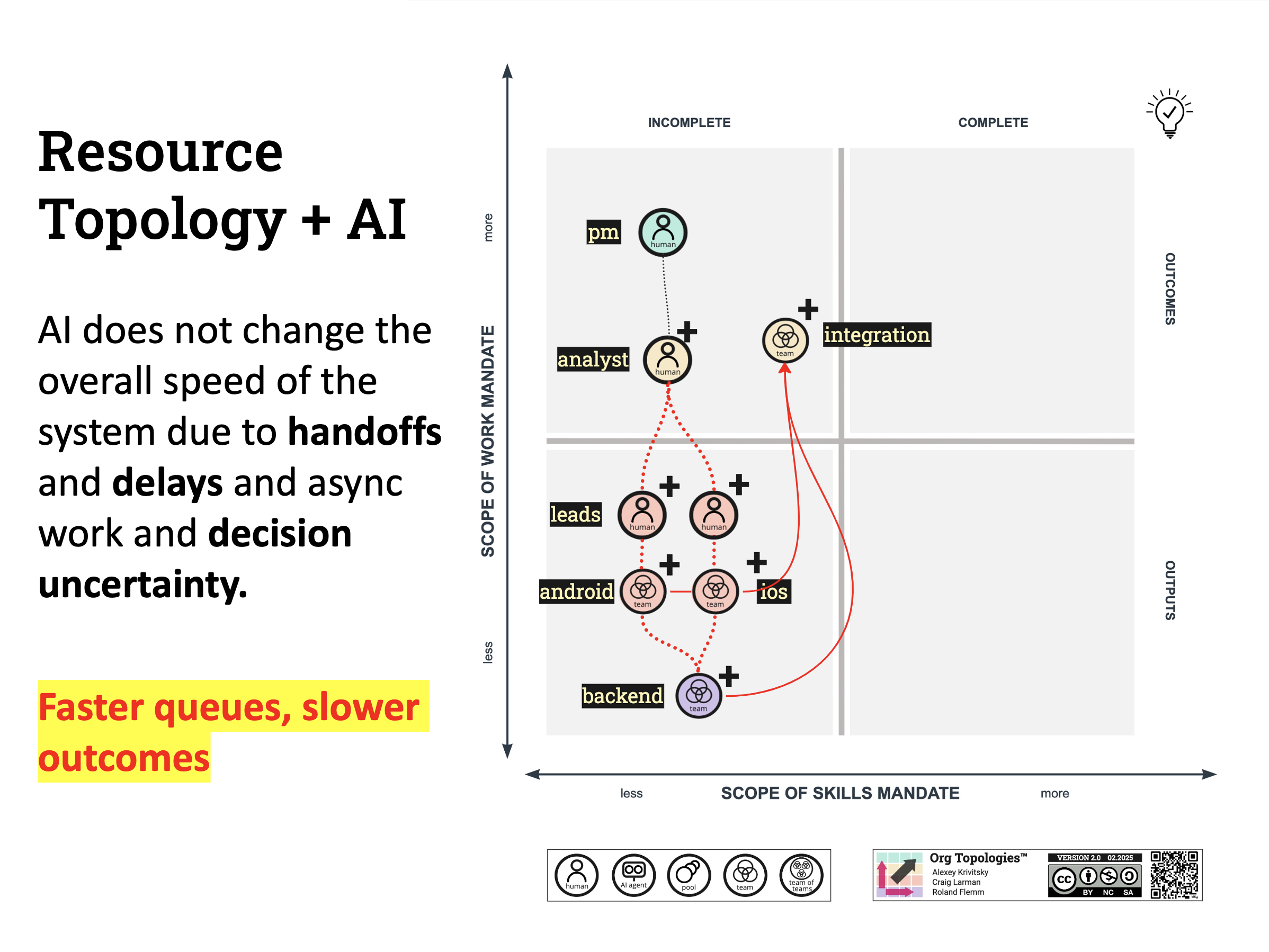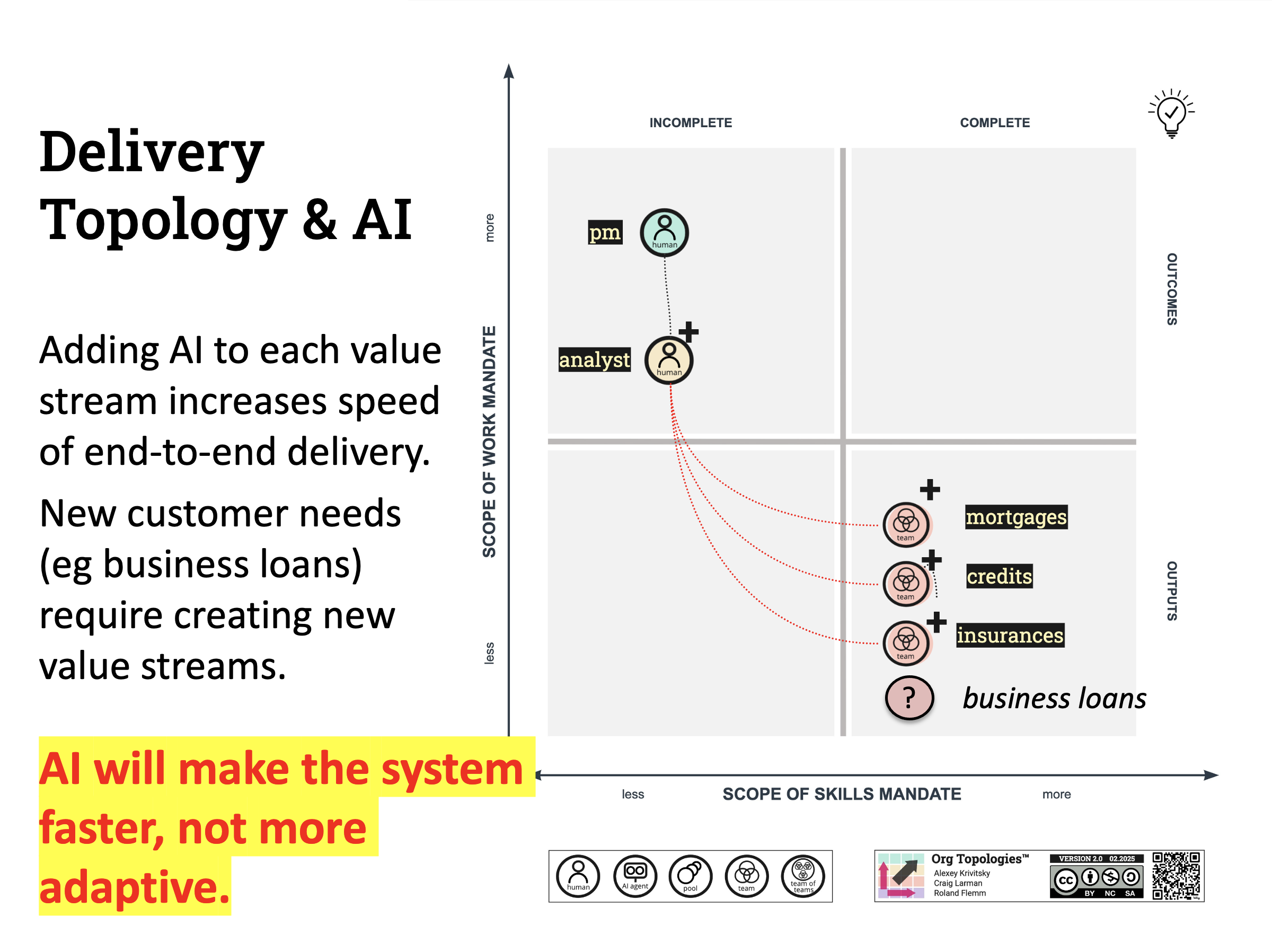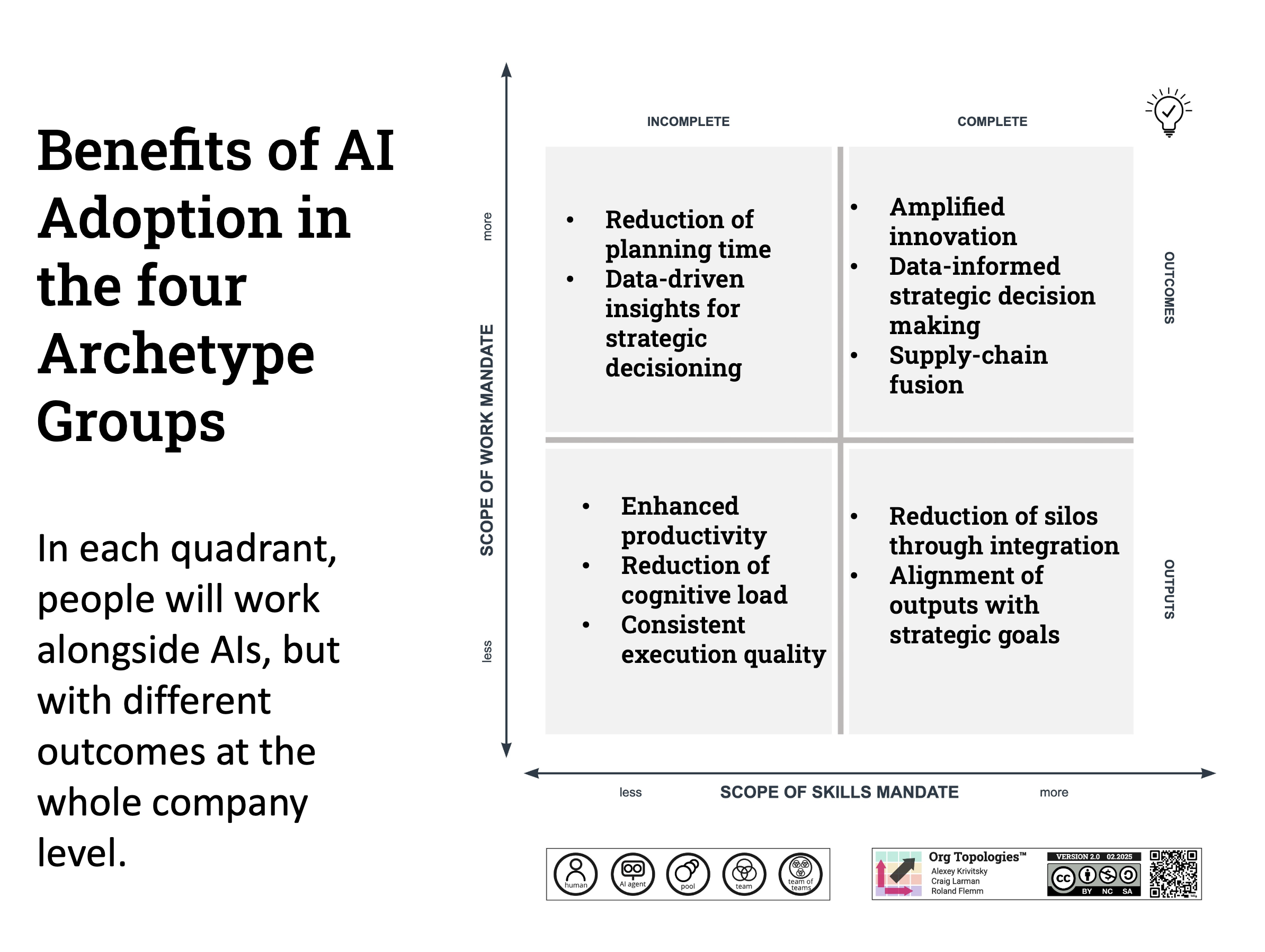Everyone is racing to adopt AI. Developers are coding faster with Copilot. Analysts are producing reports with GPT. Recruiters automate job descriptions, and marketers launch campaigns in minutes.
But here’s the uncomfortable truth: most of these initiatives only create local productivity boosts. Teams move faster in their own silos, while the big initiatives — the bold moves that actually matter to customers and strategy — remain stuck.
Why? Because the wrong organizational design doesn’t just slow you down; it actively blocks progress. Layer AI on top of dysfunction, and the dysfunction only accelerates.
Resource Topology: 2X Efficiency, System Still Stuck
In a Resource Topology, work is divided into specialized units — analysts, testers, developers — and later stitched together by an integration team. AI makes each silo faster: analysts generate specs, developers code with assistance, tests are automated.
But the system as a whole doesn’t speed up. Handoffs, approvals, and fragmented data flows remain unchanged. Distributed decision rights slow automation further, tangled with risk and audit processes. The result? Faster queues, slower outcomes.
The next step is predictable: replacing people in narrow, repetitive roles with AI agents. That delivers cost savings and local efficiency, but not the strategic adaptability leaders actually want.

Delivery Topology: 2X Speed, Still Rigid
Some organizations evolve to Delivery Topologies, aligning teams to value streams with end-to-end skills. This improves autonomy and speed within each stream. AI accelerates delivery further — features are shipped faster, backlogs shrink.
But there’s a ceiling. Each team is still locked into delivering only a specific function. If a bank wants to expand from mortgages into business loans, it must spin up an entirely new stream. Strategic pivots remain expensive and slow.
Over time, the returns diminish. Once AI has squeezed most of the speed gains, leaders face rising costs and diminishing value. Often, the fallback is to replace people with AI to cut costs — again missing the chance for true adaptability.

Adaptive Topology: 10X Relevance
The breakthrough comes with the Adaptive Topology. Here, teams of teams own whole business problems together, with the mandate and skills to deliver outcomes end to end. Coordination is built in — the people doing the work talk to each other, not through layers of managers. Cross-cutting concerns like compliance, security, and auditability are embedded, not bolted on.
AI in this environment finally delivers what leaders hope for. Instead of automating silos, it amplifies shared outcomes: surfacing customer insights, accelerating prototyping, and enabling the organization to pivot without disruptive reorganizations. Multi-specialist teams learn with customers continuously, using AI to extend their range. People aren’t replaced; they’re elevated.
This is how AI moves from 2X efficiency to 10X relevance.

First Design, Then AI
Every organization has a design. Yet most are unaware of how deeply that design shapes the performance impact of AI. Apply AI without redesign, and disappointment is almost guaranteed.
Resource Topology: AI makes parts efficient, but silos stall the system.
Delivery Topology: AI speeds up streams, but rigidity caps returns.
Adaptive Topology: AI amplifies learning and adaptability, enabling whole-system performance.
AI does not fix design flaws. It amplifies them. To unlock its promise, leaders must start with organizational design — and then bring in AI.
Strategic AI
Understanding your org design prior to adopting AI is essential. This is strategic AI.
Are you in a stable market with only little unknowns? Can you get hires to whom you expedite parts of the work? Work with projects in a Resource Topology. Optimize planning, cost efficiency with AI. Expect enhanced productivity, reduction of cognitive load and consistent execution quality.
Are you operating in a market with competitors where it matters to deliver known value to the customers faster than the others? You will need speed. Build a Delivery Topology and optimize its performance by adding AI to your value streams. Expect reduction of silos through integration and alignment of outputs with strategic goals.
Do you need to innovate and approach a volatile, unknown market? Design an Adaptive Topology. Add AI to the mix to access its full potential by delivering business outcomes. Expect Amplified innovation, Data-informed strategic decision making, Supply-chain fusion. 
Reading list
AI Won’t Fix Silos — Org Design Will
